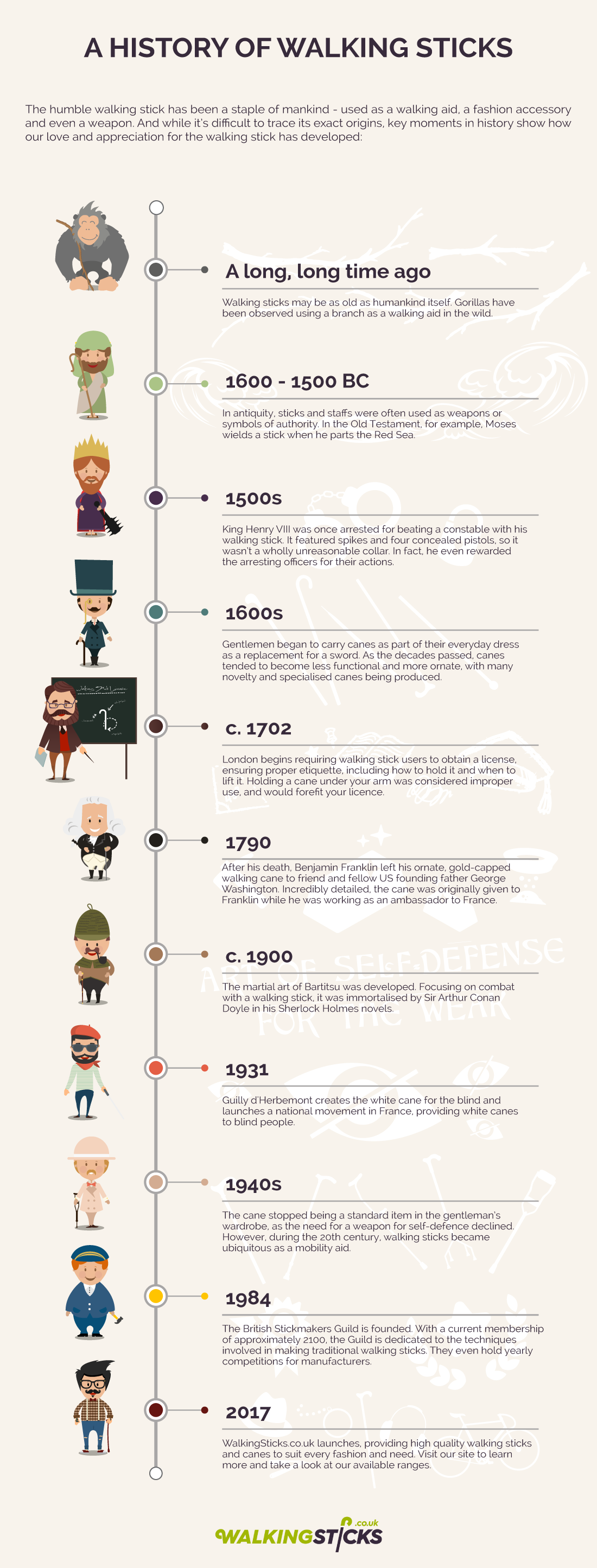A History of Walking Sticks

A History of Walking Sticks
The humble walking stick has been a staple of mankind -- used as a walking aid a fashion accessory and even a weapon. And while it's difficult to trace its exact origins, key moments in history show how our love and appreciation for the walking stick has developed.
A long, long time ago
Walking sticks may be as old as humankind itself. Gorillas have been observed using a branch as a walking aid in the wild.
1600 - 1500 BC
In antiquity, sticks and staffs were often used as weapons or symbols of authority. In the Old Testament, for example, Moses wields a stick when he parts the Red Sea.
1500s
King Henry VIII was once arrested for beating a constable with his walking stick. It featured spikes and four concealed pistols, so it wasn't a wholly unreasonable collar. In fact, he even rewarded the arresting officers for their actions.
1600s
Gentlemen began to carry canes as part of their everyday dress as a replacement for a sword. As the decades passed, canes tended to become less functional and more ornate, with many novelty and specialised canes being produced.
Circa 1702
London begins requiring walking stick users to obtain a license, ensuring proper etiquette, including how to hold it and when to lift it. Holding a cane under your arm was considered improper use, and would forfeit your license.
1790
After his death, Benjamin Franklin left his ornate, gold-capped walking cane to friend and fellow US founding father George Washington. Incredibly detailed, the cane was originally given to Franklin while he was working as an ambassador to France.
Circa 1900
The martial art of Bartitsu was developed. Focusing on combat with a walking stick, it was immortalised by Sir Arthur Conan Doyle in his Sherlock Holmes stories.
1931
Guilly d'Herbemont creates the white cane for the blind and launches a national movement in France, providing white canes to blind people.
1940s
The cane stopped being a standard item in the gentleman's wardrobe, as the need for a weapon for self-defence declined. However, during the 20th century, walking sticks became ubiquitous as a military aid.
1984
The British Stickmakers Guild is founded. With a current membership of 2100 the Guild is dedicated to the techniques involved in making traditional walking sticks. They even hold yearly competitions for manufacturers.
2017
WalkingSticks.co.uk launches, providing high quality walking sticks and canes to suit every fashion and need. Visit our site to learn more and take a look at our available ranges.
